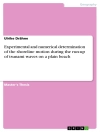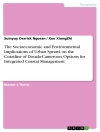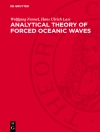This book is the result of an elaborate project initiated by the Joint Technical Committee (JTC-1) of 1) the International Society for Soil Mechanics and Geotechnical Engineering, 2) the International Association for Engineering Geology and the Environment, 3) the International Society for Rock Mechanics, and 4) the International Geotextile Society, with the focus on natural slopes and landslides.
The framework of the book sets out the steps, based on recent disaster experiences in the twenty-first century, leading to the assessment of earthquake-induced landslide hazards. It contains: 1) important cases of landslides triggered by earthquakes around the world; 2) investigation into the characteristics of ground motion site response; 3) methods to determine landslide susceptibility and triggering thresholds and their comparative study; and 4) commentary on the production of earthquake-induced landslide hazard maps. All the contents are the result of the latest researchon related areas. The book is a valuable resource for researchers, designers, consultants, academicians, government officials, and all others who are involved in the mitigation of coseismic landslides. The book contributes toward the development of a new chapter in disaster prevention and mitigation of landslides induced by earthquakes.
Mục lục
Report on landslides triggered by the 2008 Wenchuan earthquake.- Earthquake-induced landslides and ground failure in Chile: The Aysen 2007 and Maule 2010 earthquakes.- Earthquake-Induced landslides in the Nepal Himalaya.- Landslides triggered by the 2002 M 7.9 Denali Fault earthquake, Alaska, USA.- Recent earthquake-triggered landslide events in Central Asia, evidence of seismic landslides in the Lesser Caucasus and the Carpathians.- Some earthquake-induced rockslides in the Central Asia region.- Some recent coseismic landslides in Japan.- Co-Seismic Landslides in Greece, a Review.- Characteristics of Landslides and Cases of Severe Landslides on Gentle Slopes Triggered by the Chi-Chi Earthquake, Taiwan, 1999.- Landslides triggered by recent earthquakes in Italy.- Earthquake-induced landslides and related problems.- Characteristics of sites response of a series of monitored slopes in Sichuan mountain area.- Post-earthquake landscape response.- Earthquake-induced landslide susceptibility and hazard assessment approaches.- Numerical Evaluation of the Effect of Drainage Wells on the Stability of the Ichiba No.1 Landslide during an Mj6.7 Earthquake.- Displacement predictive relationships for earthquake triggered landslides and structural vulnerability models for buildings exposed to co-seismic ground movements.- A prototype earthquake-induced landslide forecast tool for New Zealand.- Coseismic landslide susceptibility and triggering analyses.
Giới thiệu về tác giả
Dr. Ikuo Towhata is a professor emeritus of The University of Tokyo and a visiting professor at Kanto Gakuin University. He is also the chair of the Professional Image Committee of the International Society for Soil Mechanics and Geotechnical Engineering (ISSMGE), a director of Tohata Architects & Engineers, and an advisor of the Chuo Kaihatsu Corporation, Japan. He was the president of the Japanese Geotechnical Society and the vice president of the Asian Region of the ISSMGE. He has left an indisputable legacy in geotechnical research, particularly in earthquake geotechnical engineering. He published more than 400 English papers in international journals and conference proceedings and a comprehensive book on geotechnical earthquake engineering. He has also maintained a lifelong dedication to education, as evidenced by his many years of service as a professor at The University of Tokyo, a distinguished visiting professor at the Indian Institute of Technology, Bombay, as well as thetime spent at the Asian Institute of Technology, Thailand. He has taught and supervised numerous students from more than 30 countries.
Dr. Gonghui Wang is a professor in the Disaster Prevention Research Institute, Kyoto University, Japan. He has been working on landslide disaster and mitigation measures from the perspectives of geophysics, geotechnics, and engineering geology for more than two decades. His research interests include landslide dynamics, climate change landslides, landslide dams, granular mechanics, soil liquefaction, risk management, and disaster and environmental education. He has published more than 200 papers in scientific journals and conference proceedings. He has also co-edited two books published by Springer. He is currently an editorial board member of Engineering Geology, Landslides, Geosciences, and other Japanese and Chinese journals.
Dr. Qiang Xu is a professor and vice president of the Chengdu University of Technology. He is also the deputy vice director of the State Key Laboratory of Geohazard Prevention and Geoenvironment Protection, China. He is mainly working on landslide hazard assessment and risk management, with a special focus on landslide monitoring and early warning as well as emergency countermeasures. He has worked closely with local communities, NGOs, and governments, and he has published more than 500 papers as well as 15 books in Chinese and English. He also works as an editor of several international journals.
Dr. Chris Massey is an engineering geologist at the Institute of Geological and Nuclear Sciences (GNS Science), New Zealand, and holds a Ph.D. from the University of Durham. He has wide experience in geology, geomorphology, and geotechnics, with a rich work background in Hong Kong, Australia, and now in New Zealand (GNS). His research interests include rock-fall analysis and design, landslide monitoring and modeling, geohazard assessment and mitigation, geological and geomorphological mapping, earthquake-induced landslide estimates, and numerical modeling. He has published more than 140 papers in scientific journals and in books and conference proceedings. He worked as the leader of several national projects on landslides in New Zealand. He also works as an editorial board member of Engineering Geology.












